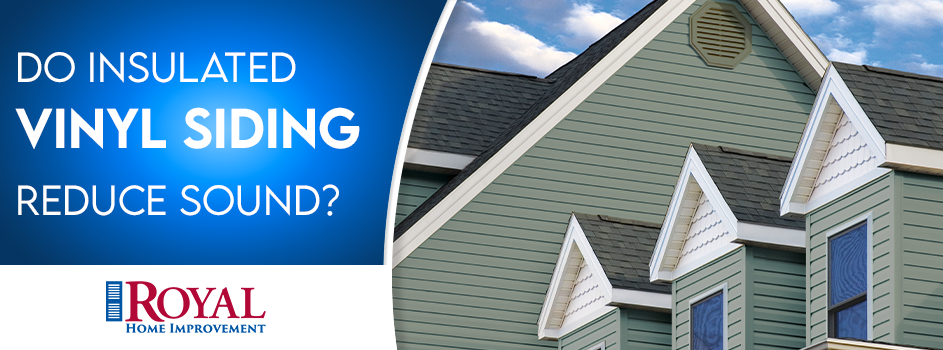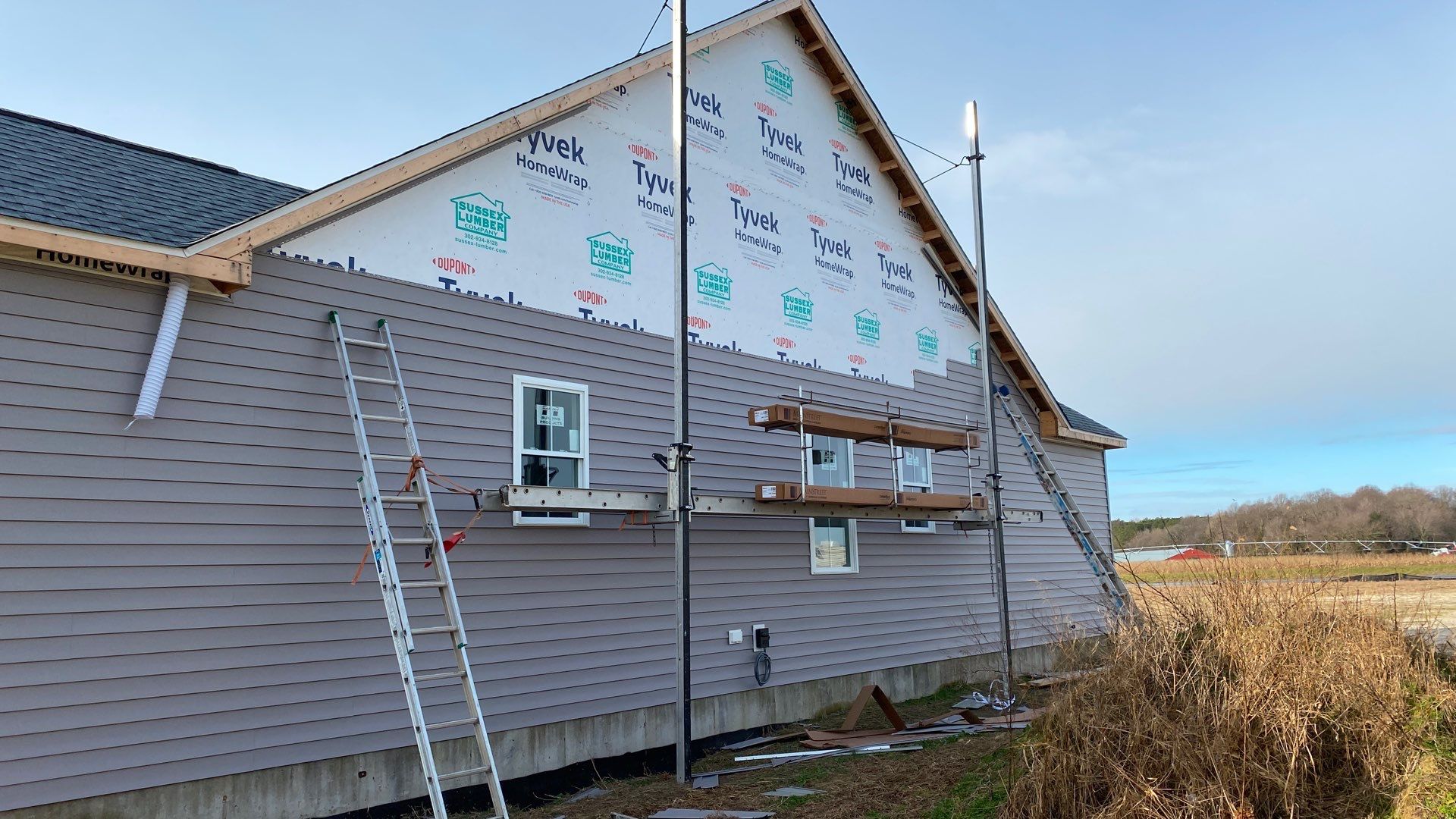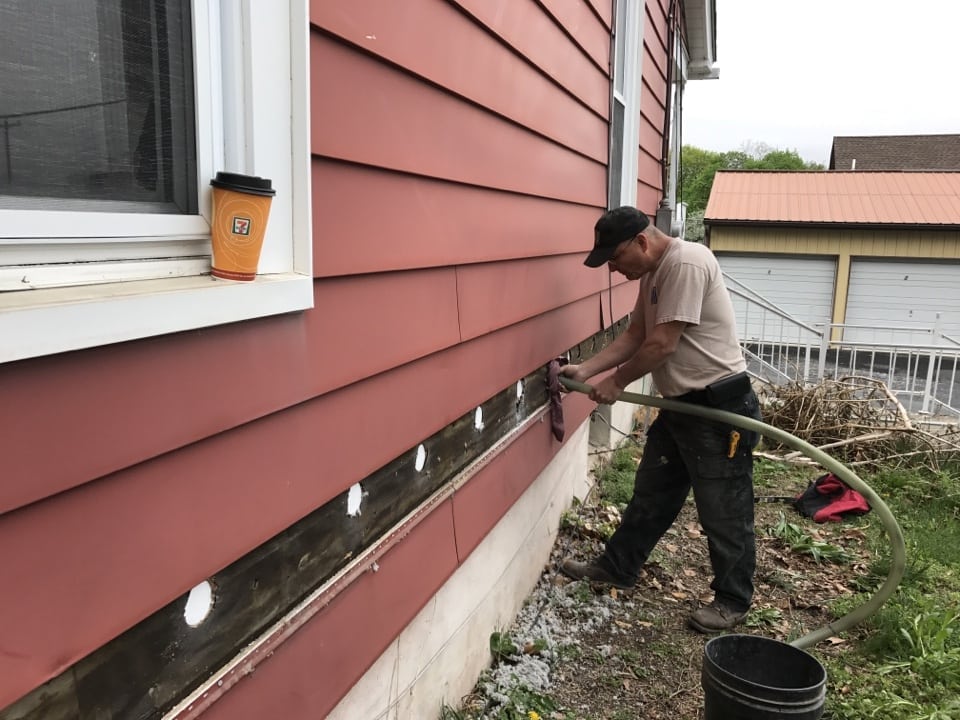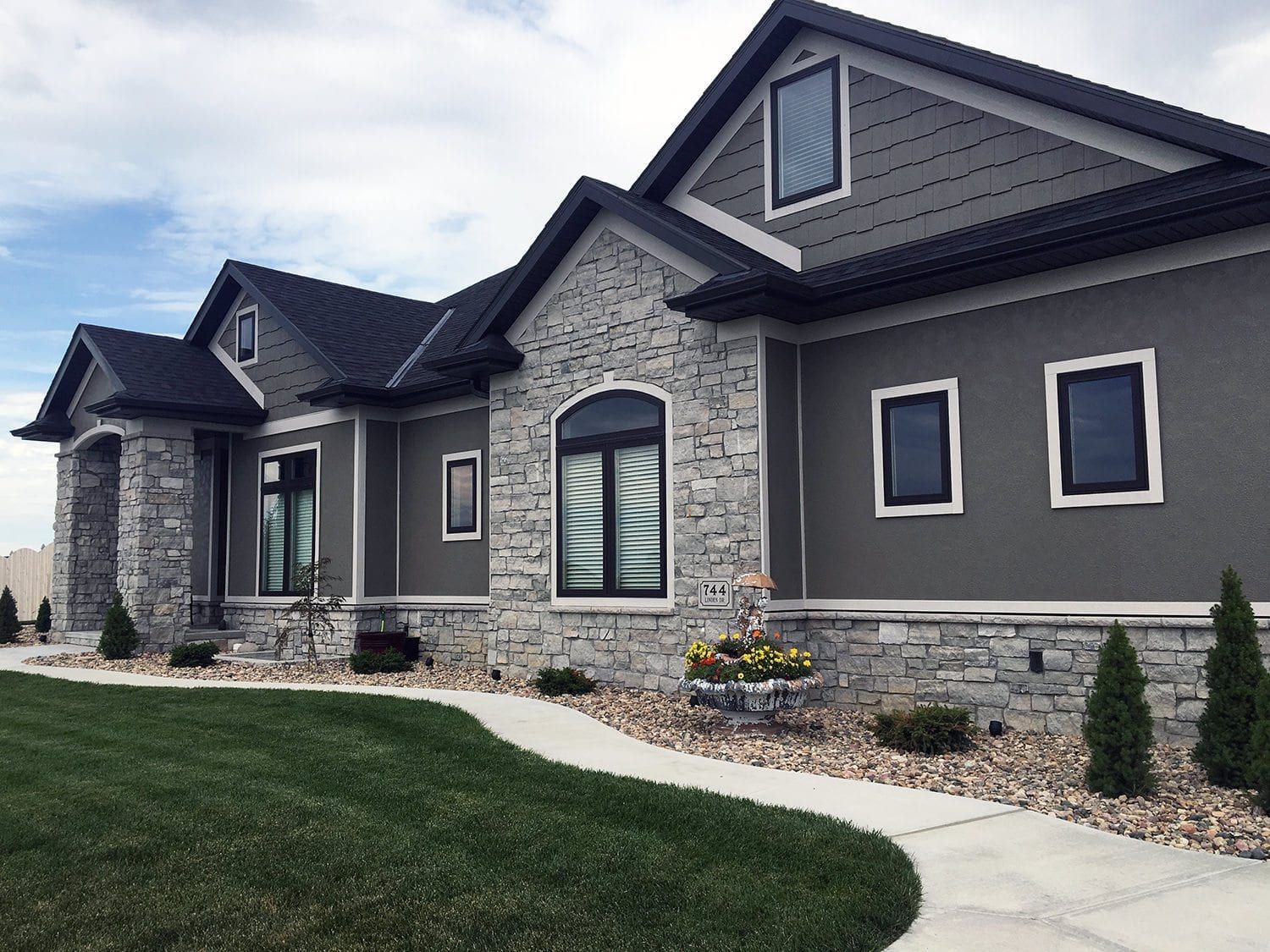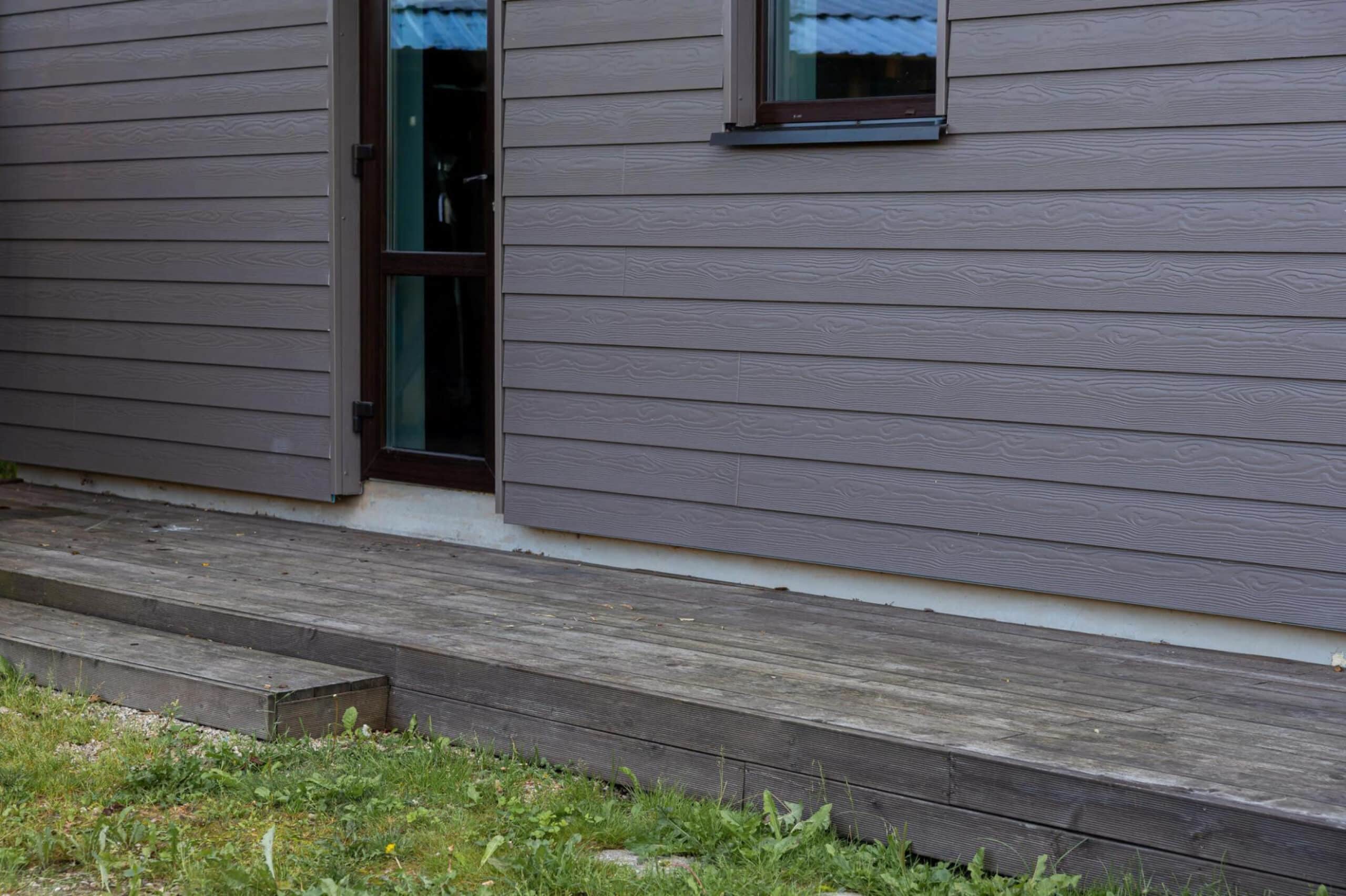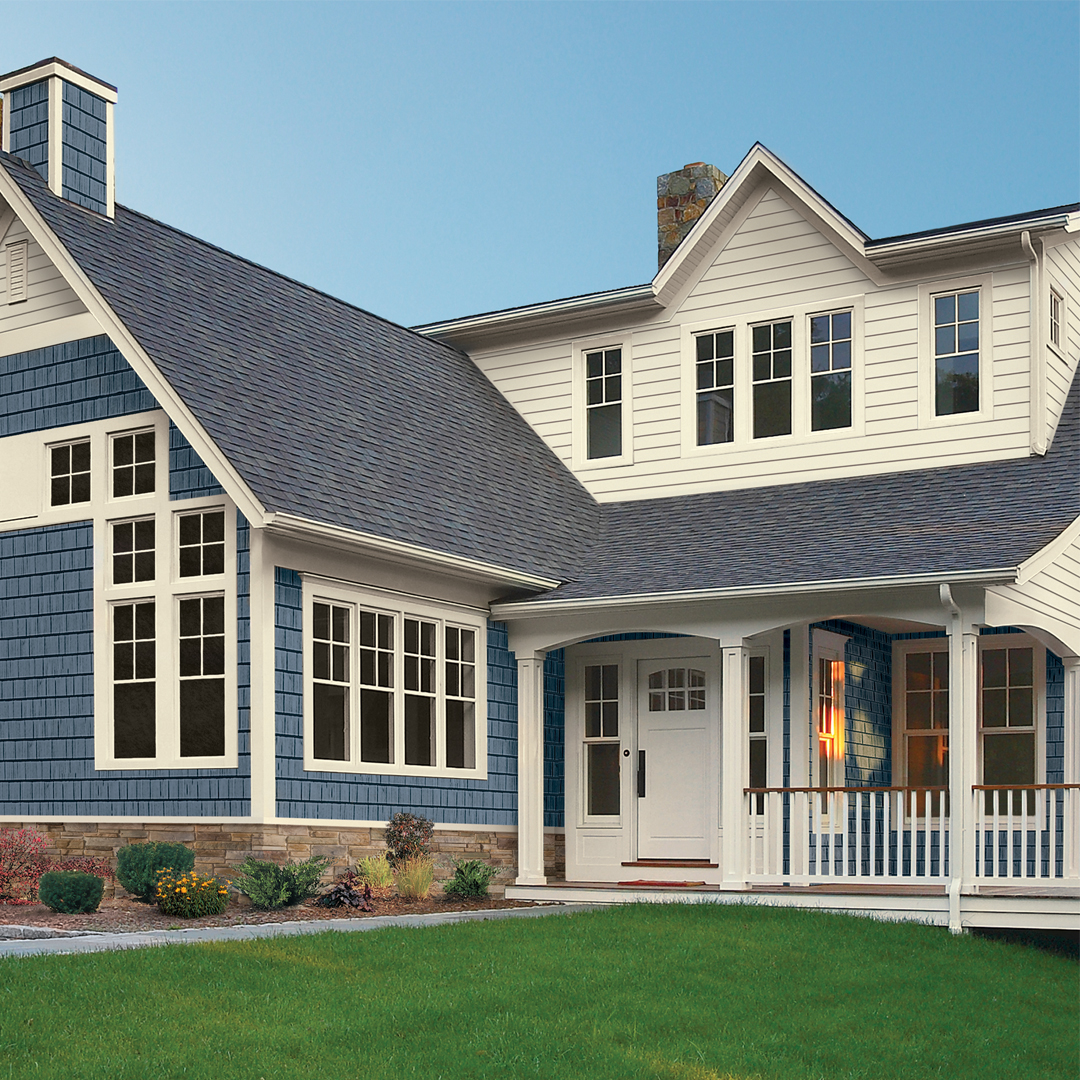Green Insulated Siding Options: A Comprehensive Guide
Green insulated siding options represent a significant advancement in sustainable building practices. This guide delves into the various types of eco-friendly siding materials available, exploring their composition, manufacturing processes, thermal performance, and environmental impact. We’ll examine installation techniques, maintenance requirements, and the long-term cost-effectiveness of choosing green siding, ultimately demonstrating how this choice benefits both homeowners and the environment.
From analyzing the lifecycle assessment of these materials to comparing their initial costs against long-term energy savings, this exploration aims to equip readers with the knowledge necessary to make informed decisions about their home’s exterior. We will also consider aesthetic aspects, showcasing how green siding can enhance the visual appeal of various architectural styles. The information presented here offers a balanced perspective, highlighting both the advantages and considerations associated with selecting green insulated siding.
Types of Green Insulated Siding
Choosing sustainable siding materials contributes significantly to a building’s overall environmental footprint. The following explores several options, examining their composition, sustainability features, and cost implications. Understanding these factors allows for informed decisions aligning with both environmental responsibility and budgetary constraints.
Green Insulated Siding Materials
The selection of green insulated siding extends beyond simply choosing a material with recycled content; it involves considering the entire lifecycle, from manufacturing to disposal. The table below summarizes key characteristics of several prominent options.
| Material | Composition | Sustainability Features | Cost Considerations |
|---|---|---|---|
| Fiber Cement Siding | Portland cement, cellulose fibers (often recycled wood pulp), and other additives. | Durable, fire-resistant, low maintenance; some manufacturers utilize recycled materials in their composition. Generally requires less frequent replacement than other materials, reducing long-term environmental impact. | Moderately priced; cost varies depending on features, thickness, and installation. |
| Recycled Plastic Siding | Made from recycled plastics, often including post-consumer materials like milk jugs and other plastic containers. | Diverts plastic waste from landfills; durable and resistant to rot, insects, and moisture. Can be manufactured with a high percentage of recycled content. | Can range from moderately priced to expensive, depending on the specific product and features. |
| Plant-Based Siding (e.g., Bamboo, Hemp) | Bamboo siding is made from rapidly renewable bamboo stalks. Hemp siding utilizes hemp fibers, a fast-growing and sustainable crop. | Rapidly renewable resources; often requires less energy to produce than traditional materials. Bamboo offers inherent strength and durability. Hemp provides excellent insulation properties. | Can be more expensive than traditional options, depending on availability and processing methods. Bamboo may require more frequent maintenance compared to other materials. |
Manufacturing Processes and Environmental Impact
The manufacturing processes of these materials significantly influence their environmental impact. Fiber cement production involves energy-intensive processes like cement manufacturing, which releases greenhouse gases. However, the use of recycled wood fibers reduces the demand for virgin timber. Recycled plastic siding reduces landfill waste but requires energy for the plastic melting and extrusion processes. Plant-based siding generally involves less energy-intensive manufacturing processes, but transportation and processing can still have an environmental footprint. The overall impact depends on factors such as the source of materials, manufacturing methods, and transportation distances.
Thermal Performance of Green Siding Materials
Thermal performance, measured by the R-value, is crucial for energy efficiency. Higher R-values indicate better insulation. Fiber cement siding typically offers a moderate R-value, often improved by adding an insulation layer behind it. Recycled plastic siding can offer varying R-values depending on its composition and thickness; some manufacturers incorporate insulation directly into the siding panels. Plant-based siding, particularly hemp, can offer excellent insulation properties due to the inherent structure of the plant fibers, potentially leading to higher R-values compared to other options. The specific R-value for each material varies depending on its thickness and composition, and it’s essential to consult the manufacturer’s specifications for precise data. For example, a 1-inch thick hemp siding panel might have an R-value of around R-4, while a similar thickness of fiber cement might have an R-value closer to R-2, without additional insulation.
Installation and Maintenance of Green Siding
Choosing and installing green insulated siding is a significant investment in your home’s energy efficiency and aesthetic appeal. Proper installation ensures optimal performance and longevity, while regular maintenance preserves its beauty and functionality. This section details the installation process for two common types of green siding – fiber cement and engineered wood – and outlines their respective maintenance requirements.
Fiber Cement Siding Installation
The installation of fiber cement siding requires precision and attention to detail. Improper installation can compromise the siding’s weather resistance and overall effectiveness. The following steps provide a general overview; always consult the manufacturer’s instructions for specific details and recommendations.
- Preparation: Begin by ensuring a solid, level surface. Repair any damaged sheathing or underlying structure. This is crucial for preventing future problems.
- Framing and Sheathing: Install appropriate sheathing and house wrap to create a moisture barrier. This prevents water damage to the underlying structure. Ensure proper ventilation to prevent moisture buildup.
- Installation of Starter Strip: A starter strip provides a level base for the first row of siding. This ensures even alignment and proper overlap.
- Siding Installation: Install the siding panels, ensuring proper overlap and alignment. Use appropriate fasteners, following the manufacturer’s guidelines for spacing and penetration depth. This prevents damage to the siding and ensures a secure installation.
- Caulking and Finishing: Seal all joints and seams with a high-quality, exterior-grade caulk. This prevents water intrusion and ensures a weathertight seal.
- Safety Precautions: Wear appropriate safety gear, including safety glasses, gloves, and dust masks. Use caution when working at heights and follow all relevant safety regulations.
Engineered Wood Siding Installation
Engineered wood siding, often made from recycled materials, offers a sustainable alternative to traditional options. Its installation is generally simpler than fiber cement but still requires careful attention to detail.
- Preparation: As with fiber cement, prepare the surface by repairing any damaged areas and ensuring a level foundation. This step is crucial for preventing issues down the line.
- Installation of Starter Strip: Similar to fiber cement, a starter strip provides a straight and level base for the first row of siding. This guarantees a professional finish.
- Siding Installation: Install the engineered wood panels, overlapping them according to the manufacturer’s specifications. Use appropriate nails or screws to secure the panels.
- Finishing and Caulking: Caulk all seams and joints to prevent water infiltration. This helps maintain the integrity of the siding and protects the underlying structure.
- Safety Precautions: Wear safety glasses and gloves to protect yourself from splinters and debris. Use caution when working at heights, and always follow manufacturer’s instructions.
Maintenance of Green Siding
Regular maintenance extends the lifespan of green insulated siding and maintains its aesthetic appeal. Different types of green siding require slightly different maintenance approaches.
Fiber cement siding is generally low-maintenance, requiring only periodic cleaning to remove dirt and debris. Minor repairs, such as replacing damaged panels, are relatively straightforward. With proper care, fiber cement siding can last for 50 years or more. Engineered wood siding, while also relatively low-maintenance, may require more frequent cleaning and occasional repainting or staining to maintain its appearance and protect it from the elements. Its lifespan is typically shorter than fiber cement, ranging from 20 to 30 years depending on the quality and maintenance.
Green Siding Cleaning Infographic
The infographic would be visually appealing, using clear icons and concise text. It would feature three main sections, one for each common type of green siding: fiber cement, engineered wood, and vinyl (often considered a green option due to its recyclability). Each section would illustrate the appropriate cleaning methods with simple icons.
For example, the fiber cement section might show an icon of a soft-bristled brush and a bucket of soapy water, accompanied by text indicating the use of mild detergent and water for regular cleaning, and a pressure washer (with a low-pressure setting) for stubborn stains. The engineered wood section would similarly show icons illustrating gentle cleaning with a soft brush and mild detergent, emphasizing the avoidance of harsh chemicals. The vinyl section would display icons representing gentle scrubbing with soap and water and the potential use of a vinyl cleaner for more persistent dirt. A final section would highlight the importance of regular cleaning to prevent the buildup of dirt and grime, extending the siding’s lifespan. The infographic would use a consistent color scheme and a clear, easy-to-understand layout.
Environmental Impact and Sustainability
Choosing green insulated siding offers significant environmental advantages over traditional materials. A comprehensive lifecycle assessment reveals the multifaceted impact of this choice, from resource extraction to final disposal. Understanding this impact is crucial for making informed decisions that minimize environmental harm and promote sustainable building practices.
The lifecycle assessment of green insulated siding encompasses several key stages. Material sourcing involves extracting raw materials, often with varying levels of environmental impact depending on the specific materials used. Manufacturing processes consume energy and generate waste, and transportation from the manufacturing facility to the construction site contributes to greenhouse gas emissions. Installation itself requires energy and resources, while the eventual disposal or recycling of the siding at the end of its lifespan also carries environmental consequences. Minimizing impact at each stage is key to the overall sustainability of the product.
Lifecycle Assessment Stages and Their Environmental Impacts
The environmental impact of green insulated siding varies considerably depending on the specific materials used and the manufacturing processes involved. For instance, siding made from recycled materials generally has a lower environmental impact than those made from virgin materials, as it reduces the demand for new resource extraction. Similarly, the energy efficiency of the manufacturing process plays a significant role. Transportation distances also matter; locally sourced materials reduce the carbon footprint associated with transportation. Finally, the ease of recycling or disposal at the end of the product’s life significantly impacts its overall environmental footprint. Sustainable manufacturing practices, including the use of renewable energy sources and waste reduction strategies, further minimize the environmental impact. For example, a manufacturer using solar power in its production process would have a lower carbon footprint than one relying solely on fossil fuels. Similarly, a siding product designed for easy disassembly and recycling would have a smaller environmental impact than one destined for landfill.
Green Building Certifications and Standards
Several green building certifications and standards address the environmental performance of building materials, including siding. LEED (Leadership in Energy and Environmental Design) is a widely recognized green building rating system that considers various factors, including material selection, energy efficiency, and waste management. Other relevant certifications might include those specific to the type of material used, such as certifications for recycled content or sustainable forestry practices. Meeting these standards demonstrates a commitment to environmentally responsible construction. For instance, a building project aiming for LEED certification might prioritize siding options that meet specific requirements for recycled content or low embodied carbon. The specific criteria vary depending on the certification program and the project’s location.
Environmental Benefits Compared to Traditional Options
Green insulated siding offers significant environmental benefits compared to traditional options, primarily through reduced energy consumption and a lower carbon footprint. The superior insulation properties of green siding reduce the amount of energy needed to heat and cool a building, leading to lower energy bills and decreased reliance on fossil fuels. This, in turn, results in a smaller carbon footprint. For example, a house insulated with green siding might reduce its annual energy consumption by 15-20%, leading to a significant reduction in greenhouse gas emissions compared to a similar house using traditional siding. This reduction is directly attributable to the improved thermal performance of the green siding. Furthermore, the use of recycled materials and sustainable manufacturing processes in the production of green siding further minimizes the overall environmental impact. The long-term benefits extend beyond energy savings to encompass reduced reliance on non-renewable resources and decreased landfill waste.
Cost Analysis and Value Proposition
Investing in green insulated siding represents a significant upfront cost, but the long-term benefits in energy savings and increased property value often justify the expense. A thorough cost analysis is crucial to understand the overall return on investment. This section compares the initial cost of green insulated siding with traditional options and examines the long-term financial advantages.
The initial cost of green insulated siding is generally higher than traditional materials like vinyl or wood. However, this increased upfront investment is often offset by substantial long-term savings in energy costs and potential increases in property value.
Comparison of Initial Costs and Long-Term Savings
The following table provides a comparative analysis of initial costs and long-term energy savings for various siding types. Note that these figures are estimates and can vary significantly based on factors such as home size, climate, material selection, and labor costs. It’s crucial to obtain accurate quotes from local contractors for your specific project.
| Siding Type | Initial Cost (Estimate per 100 sq ft) | Long-Term Savings (Energy) per year (Estimate) | Overall Value (considering 15-year lifespan) |
|---|---|---|---|
| Vinyl Siding | $1,500 – $3,000 | $100 – $200 | Moderate; Primarily driven by low initial cost. |
| Wood Siding | $2,500 – $5,000 | $150 – $300 (depending on insulation added) | Moderate to High; Aesthetic appeal adds value, but maintenance is a factor. |
| Fiber Cement Siding | $3,000 – $6,000 | $200 – $400 (depending on insulation added) | High; Durability and longevity offset higher initial cost. |
| Green Insulated Siding (e.g., Insulated Vinyl, Polyurethane) | $4,000 – $8,000 | $300 – $600 | High to Very High; Significant energy savings and increased property value outweigh higher initial investment. |
Long-Term Cost Savings from Energy Efficiency
Green insulated siding’s superior thermal performance significantly reduces energy consumption for heating and cooling. This translates to lower monthly utility bills over the siding’s lifespan. For instance, a homeowner in a colder climate might see a reduction in heating costs of $300-$500 annually compared to a home with traditional siding. This cumulative saving over 15-20 years can be substantial.
Return on Investment (ROI) for Green Insulated Siding
The ROI on green insulated siding is determined by comparing the initial investment against the cumulative savings from reduced energy bills and potential increases in property value. While precise figures depend on various factors, a typical scenario might involve an initial investment of $6,000 resulting in annual energy savings of $400. Over 15 years, this translates to $6,000 in energy savings, essentially recovering the initial investment. Furthermore, energy-efficient homes are often more attractive to buyers, leading to a higher resale value. A recent appraisal might show an increase of $5,000-$10,000 for a home with green insulated siding compared to a similar home with traditional siding.
Aesthetic Considerations and Design Options
Green insulated siding offers a surprisingly diverse range of aesthetic possibilities, moving beyond the simplistic notion of “green” to encompass a spectrum of colors, textures, and styles that can complement various architectural designs and homeowner preferences. The right choice can significantly enhance a home’s curb appeal and overall value.
Choosing green insulated siding allows for creative expression while maintaining energy efficiency. The visual impact depends heavily on the selection of color, texture, and how these elements interact with the home’s existing architecture and landscaping.
Color and Texture Options
The availability of colors and textures in green insulated siding is extensive, allowing for a personalized touch. While the term “green” might conjure images of a single shade, the reality is far richer. Consider these options:
- Shades of Green: From deep forest green to light sage, the spectrum of green hues is vast. Imagine a deep, mossy green on a Victorian home, contrasting beautifully with its intricate details, or a lighter, spring green on a modern farmhouse, enhancing its clean lines.
- Complementary Colors: Green also pairs well with other colors. Consider a home with green siding accented by white trim, creating a classic and elegant look. Or perhaps a warmer tone, like beige or brown, to provide a more rustic feel.
- Textured Finishes: The texture of the siding can significantly impact its visual appeal. Options range from smooth, sleek surfaces to those with wood-grain patterns, stucco-like finishes, or even those mimicking the look of natural stone. A wood-grain finish on a craftsman-style home could beautifully complement the existing wood elements, while a smooth finish might suit a minimalist design.
Green Insulated Siding and Architectural Styles
The versatility of green insulated siding allows it to integrate seamlessly with various architectural styles. The key is to choose the right shade, texture, and style to complement the home’s existing design.
For example, a deep, rich green with a wood-grain texture might be perfectly suited for a Craftsman-style home, echoing the natural materials commonly used in that architectural style. In contrast, a lighter shade of green with a smooth finish might be a more appropriate choice for a contemporary or modern home, emphasizing its clean lines and minimalist aesthetic. A Victorian home could benefit from a darker, more dramatic green with intricate detailing, complementing the home’s ornate features.
Hypothetical Scenarios
Let’s consider two hypothetical scenarios to illustrate the aesthetic impact of green insulated siding:
Scenario 1: A Traditional Cape Cod
Imagine a charming Cape Cod style home, traditionally painted white. Replacing the siding with a soft, sage green would instantly modernize the look, giving it a fresh, updated feel without sacrificing its inherent charm. The subtle green would complement the white trim and create a serene and inviting atmosphere. Using a slightly textured finish that subtly mimics wood grain would enhance this effect.
Scenario 2: A Modern Ranch
Consider a contemporary ranch-style home with clean lines and large windows. Opting for a deep forest green with a smooth, sleek finish would create a bold statement, highlighting the home’s modern aesthetic. The dark green would create a striking contrast against the lighter-colored trim and landscaping, emphasizing the home’s architectural features. This choice could create a sophisticated and impactful look.
Final Conclusion
Ultimately, the decision to install green insulated siding involves weighing various factors, including cost, aesthetics, and environmental responsibility. While the initial investment might be higher than traditional options, the long-term energy savings, increased property value, and reduced environmental footprint make a compelling case for its adoption. This comprehensive guide has explored the multifaceted aspects of green siding, empowering homeowners to make informed choices that align with their individual needs and values while contributing to a more sustainable future.
